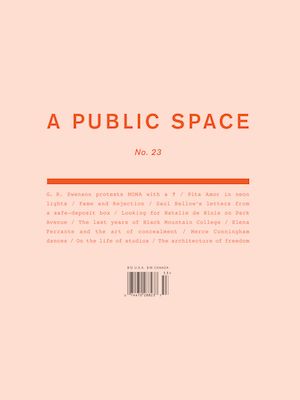Reminiscence
Early On
Isobel and Michael Armstrong
Log in to read the rest.
If you are a subscriber but do not currently have online access, please contact us to link your subscription at subscribe@apublicspace.org
Not a subscriber?
Not yet a subscriber? Join us now, and become a part of the conversation.
About the author
Isobel Armstrong,a fellow of the British Academy and a senior research fellow of the Institute of English Studies, is the author, most recently, of Victorian Glassworlds: Glass Culture and the Imagination, 1830 to 1880 (Oxford). Her poetry appears regularly in The Shearsman.
Michael Armstrong was the longtime head teacher at Harwell Primary School in Oxfordshire and is the author, most recently, of What Children Know: Essays on Children’s Literacy and Visual Art(lulu.com).
